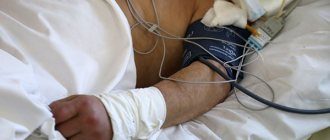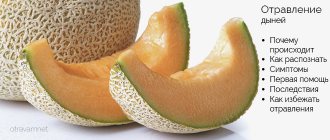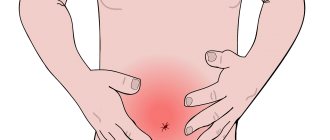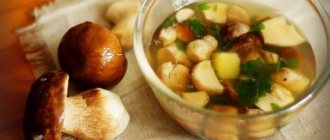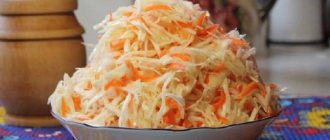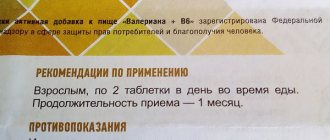Dairy products are a valuable source of calcium and phosphorus, vitamins A and B2. They play a particularly important role in baby nutrition, helping babies grow healthy and strong. Cottage cheese, kefir, and butter are necessary for the full formation of bones and teeth, strengthening the immune system, and preventing various diseases.
But the nutritional properties of milk appeal not only to humans. It is also loved by pathogenic bacteria, which actively multiply when storage rules are not followed, high air temperatures, and poor hygiene. After the expiration date, their quantity increases to such an extent that it can cause serious intoxication of the body.
How does poisoning occur?
Butter poisoning is not a rare case of food poisoning, especially in the warm season. Intoxication is characterized by vomiting, loose stools, and a disturbance in general well-being. Foodborne illness is a type of food poisoning that occurs when eating food that is contaminated with bacterial toxins.
Such cases arise if in a food product that is stored in violation of storage conditions, bacteria actively produce toxins during their life. When eating such products, severe intoxication occurs. Characteristics of food poisoning due to butter poisoning:
- short incubation period - that is, from the moment of infection to the appearance of the first signs of poisoning, 1-2 hours pass;
- outbreaks of poisoning are typical for all people who have eaten a certain product (most often these are families);
- seasonality – warm season;
- not associated with poor hygiene;
- directly related to violation of food storage conditions.
Read how you can be poisoned by cake: symptoms and principles of helping the victim.
Why do signs of food poisoning appear in a person without vomiting: how to help someone who has been poisoned.
How are these intestinal disorders classified?
First of all, it becomes clear what exactly causes food poisoning. If the culprits of intoxication are pathogenic microorganisms that developed naturally in the product, then intestinal disorders are classified according to the severity of the person’s condition:
- lungs;
- average;
- heavy.
As a rule, mild and moderate forms of intestinal disorders can be cured at home. Severe poisonings may require medical attention or even hospitalization.
In the event that specific dangerous substances become the culprits of intoxication, then the poisoning is classified into the corresponding poison type group and treated in a hospital.
Symptoms of poisoning
Symptoms of poisoning occur quite quickly - within a few hours nausea and vomiting may appear. The onset of the disease is acute with a rapid increase in symptoms of dehydration. Abdominal pain, changes in stool, bloating and a disturbance in general condition are also characteristic. Let's take a closer look at the clinical picture of food poisoning:
- Nausea is the first symptom that appears during poisoning: it is independent or ends in vomiting. At the same time, salivation increases and hiccups may appear.
- Vomiting, as a rule, is repeated, which brings relief for a while, but then it repeats again. At first, the vomit contains food debris, and after the stomach has emptied, vomiting of gastric juice or bile may continue.
- Headache, dizziness during poisoning, and poor general health indicate the severity of the general condition. As intoxication progresses, cold, sticky sweat appears.
- Abnormal bowel movements are characterized by the appearance of diarrhea (see Diarrhea due to poisoning). It can be either one-time or profuse, which very quickly leads to dehydration of the body (dehydration). The stool initially contains food debris, and then it becomes more like watery stool. Before diarrhea, spasmodic pain appears in the abdomen. Periods of spasms are followed by periods of calm.
- An increase in body temperature occurs due to an increase in intoxication, therefore, the higher the temperature, the more severe the poisoning of the body.
- Loss of electrolytes through vomiting and diarrhea can disrupt the electrolyte balance and homeostasis of the body, and cause changes in the functioning of organs, directly, interruptions in the functioning of the heart.
As fluid is lost, blood pressure (BP) decreases, lips and fingertips become blue, and convulsions may develop.
Nutrition after poisoning to restore the body
To restore the body, a balanced diet rich in vitamins and minerals is required. However, even at this time the body must be spared, especially the gastrointestinal tract.
During this period, nutrition should be based on the following principles:
- Drink enough liquid, from 1.5 to 2 liters. The following drinks are prohibited: packaged juices, carbonated water, coffee, strong tea, and alcohol;
- Portions should not be large
. You should eat no more than 150–200 grams at a time; - Food should be easy to digest and assimilate. It is recommended to consume pureed foods, crushed foods, and well-cooked cereals;
- Heat treatment
. You still cannot eat fried foods; preference is given to boiled and steamed foods.
Avoid foods that are difficult for the gastrointestinal tract from the diet.
:
- Legumes;
- White cabbage;
- Whole milk;
- Fatty meat and fish;
- Cakes and pastries;
- Baking;
- Canned food;
- Salty, spicy and smoked foods;
- Spices and various sauces.
During the recovery phase, you can introduce baked fruits (apples and pears)
. Gradually, adults can switch to fresh fruits. Returning to a normal diet after poisoning is gradual and requires time and patience.
Proper nutrition during and after poisoning is a prerequisite for rapid recovery. A gentle diet and a special food regimen help reduce the load on the gastrointestinal tract, thereby improving the functioning of the digestive system and accelerating the healing process.
Drinking plenty of fluids is the most important component of the diet in case of poisoning. During intoxication, a lot of fluid is removed from the body, which threatens it with dehydration and an imbalance of water and salts. Drinking plenty of water and other healthy drinks every day helps replenish lost fluids and helps eliminate remaining toxins as quickly as possible.
Often, in the first time after poisoning, the patient has no appetite - this is a natural protective reaction of the body, so you should not force yourself to eat. With a full drinking regime, it is quite possible to do without food for 1-2 days.
In the acute period, when the patient is bothered by vomiting and diarrhea, you need to drink little by little (about 50 ml), but often (every 10 minutes), since during these manifestations a lot of fluid is removed from the body, which must be replenished regularly to avoid dehydration.
On the second day, and if appetite is restored earlier, you can gradually switch to normal nutrition. For several more days, the inflammatory process remains in the intestines, and the production of digestive juices is reduced, so you need to eat in small portions and often (at least 6 times a day).
For a weakened digestive system, it will be better if the meals in the first days are separate, for example, protein foods should be consumed separately from carbohydrates - this way they are digested faster. It is advisable that there be equal intervals between meals, approximately 2 hours - this time is enough to digest light food.
Note!
All foods consumed during the diet must be heat-treated: baked, stewed, steamed, boiled.
You must adhere to the strict diet for at least 3 days, and within the next two weeks, avoid eating any junk food.
Causes of intoxication
If you eat a large amount of butter and do not adhere to a diet, you can provoke gastroduodenitis, pancreatitis or cholecystitis. These are chronic diseases of the gastrointestinal tract, which are aggravated by poor diet or eating large amounts of fatty, fried, and peppery foods.
Chronic gastroduodenitis, pancreatitis and cholecystitis in the acute stage have a similar clinical picture as foodborne toxic infection. But still, there are certain differences:
- vomiting and loose stools in diseases of the gastrointestinal tract are not as pronounced as in case of poisoning. With gastritis, profuse diarrhea and severe dehydration are not observed;
- with gastritis, pain in the epigastrium or upper abdomen after eating is more disturbing; in case of poisoning, the pain is of a pronounced spasmodic nature;
- The cause of exacerbation of gastritis or pancreatitis is a violation of the diet, eating fried, fatty or spiced foods. But the food remains of high quality and has a good shelf life;
- with gastritis, one family member is sick and there is no outbreak of the disease, as with foodborne toxic infection.
Read how to treat poisoning in a child at home: first aid, dangerous signs of intoxication.
Other causes and same symptoms
There are symptoms similar to poisoning, which also require attention and special food. Vomiting and diarrhea may begin suddenly. Food after vomiting and diarrhea is scanty, low-fat and cooked exclusively steamed or boiled.
For vomiting and diarrhea
These symptoms in adults indicate excessive doses of alcohol (or poisoning), eaten low-quality food (expired, improper storage conditions, preparation). But if this appears in a child, then you should be afraid of rotavirus infection. An additional symptom is loss of appetite.
Mothers should not immediately give their child unknown drugs, but urgently call an ambulance. To overcome the infection, you will need a special diet, which is based on the following foods:
- porridge without milk or sweeteners;
- steamed local vegetables (carrots, zucchini, squash, beets);
- boiled or steamed white meat;
- soups without a fried base, stewed vegetables.
Bananas, ice cream, sweets or anything that children love will not help restore good health. You should not fall for this trap, but in every possible way avoid your child consuming such products.
When vomiting
It often happens that vomiting starts for no reason and it seems that this is poisoning. But the reasons for this condition may be a high temperature (for example, with the flu) or overeating rolls at a sushi bar. After such vomiting, what should you take? Minimum food. It is better not to drink milk, tea, compote after vomiting. Make do with water. Next, go on a strict diet for one day to control the appearance of other symptoms and not aggravate the condition.
After vomiting, you can eat a maximum of low-fat broth. If vomiting has not recurred for more than a day, then you can gradually include cheese, rice, buckwheat, oatmeal, semolina or rice milk porridge, and omelet in your diet. Children can also eat this food; the menu is practically no different from that for adults. After vomiting, pancreatin is also used. It should be drunk after eating even the lightest food.
For diarrhea
This symptom is also similar to poisoning, but can manifest itself from the consumption of products that were incorrectly stored, prepared, have expired, or those that are simply not absorbed by the body (containing lactose, a large amount of fiber).
The diet is standard - do not eat anything that can cause irritation of the mucous membranes of the digestive system. Drinking is an invariable rule, since with such diarrhea, the body actively loses moisture.
It does not matter for what reason the adverse symptoms are caused. A diet after their discovery is mandatory. Otherwise, there is a chance to miss other concomitant manifestations of the disease, which may not have been detected immediately.
Contents of the article: classList.toggle()»>expand
Poisoning can occur when consuming low-quality food, alcohol, various chemicals, as well as when pathogenic microorganisms penetrate the digestive tract. This condition is accompanied by characteristic symptoms: vomiting, diarrhea, intoxication and hyperthermia. It should be noted that for recovery it is necessary to follow a therapeutic diet.
The diet for food poisoning in adults is aimed at:
- Restoring water-salt balance in the body
; - Relieving inflammation of the gastric and intestinal mucosa;
- Acceleration of healing of mucous membranes
; - Elimination of signs and consequences of dehydration;
- Satisfying the body's nutritional needs.
To make it easier for an adult body to cope with the pathological process and its consequences, it is necessary to adhere to several important dietary recommendations
:
When following a diet, adults need to carefully monitor the quality of the foods they eat.
. The diet should be expanded gradually, after consultation with your doctor. However, some restrictions remain relevant for a long time.
First aid
First of all, in case of butter poisoning, you need to call an ambulance. And before the doctors arrive, perform certain actions aimed at removing toxins from the body:
- Step 1. Induce vomiting until clean rinsing water appears, that is, until the food eaten leaves the stomach. This can be done by giving a person to drink a large amount of clean boiled water and pressing on the root of the tongue.
- Step 2. After vomiting stops, give adsorbents to drink. They absorb toxins on their surface, and thus purify the blood (Activated carbon, Enterosgel, white coal, Sorbex, Polysorb, etc.).
- Step 3. Do a series of cleansing enemas to flush out the remaining toxic foods from the intestines. The enema is done with cool water, which can be slightly salted to improve intestinal motility.
Note! You cannot induce vomiting if the person is unconscious.
Let's look at medications that should not be taken without consulting a doctor:
- First of all, you should not take antidiarrheal medications that stop diarrhea. Because, in this case, all toxins will remain in the body. On the contrary, it is necessary to flush out food debris and toxins from the intestines.
- Under no circumstances should you take painkillers. They relieve pain, but the picture of poisoning may blur. Surgical diseases such as acute appendicitis, acute calculous cholecystitis or acute pancreatitis have a picture similar to poisoning, but at the same time, they require surgical treatment and correct diagnosis.
- You should not drink alcoholic beverages in any form - they worsen general intoxication.
General rules of diets
Depending on the cause of poisoning, certain diets may be prescribed. But there are general recommendations that should be followed after toxins have already been removed from the body:
- On the first day after gastric and intestinal lavage (or administration of drugs that eliminate the effects of poisoning), it is not recommended to consume foods that can burden the body with prolonged digestion or fermentation. The ideal food is still water and crackers (the best are those made from a loaf). Depending on how you feel, you can drink freshly brewed black tea, which is not strong, without sweeteners. Biscuit cookies are allowed instead of crackers.
- It is worth introducing a variety of food only on the second or third day (you can add low-fat chicken broth, water puree, low-fat kefir or yogurt and other easily digestible foods).
- Avoid physical activity. The body will not yet be ready for such tests (there may be severe weakness after vomiting or diarrhea). This can only aggravate the situation and cause dizziness and loss of consciousness.
The recovery period will be faster if you control what you need to eat in a particular case of poisoning. A chance to quickly recover from vomiting and loose stools if you know the source of the poisoning.
How can you get poisoned?
Butter is produced by churning cow's cream. The average fat content of the finished product ranges from 72 to 82.5%. The oil has many beneficial properties that the human body needs for normal functioning.
- Cholesterol is needed for the formation of cell membranes, the production of vitamin D, and liver function.
- You can find a whole vitamin complex in the oil: vitamin A helps improve the visual organ, D strengthens muscles and bones, E nourishes the skin.
- Butter contains calcium, magnesium, zinc, and other substances beneficial to the body.
The dairy product has a high nutritional value and therefore nutritionists do not recommend eating it in large quantities.
Butter consists of animal fats and if stored incorrectly, it is quite easy to become poisoned. Fatty acids are precipitated when exposed to elevated temperatures or sunlight, resulting in toxins and other harmful substances appearing in the dairy product. As bacteria multiply, the edge of the oil becomes dark yellow in color and has a hard consistency. This product should not be eaten; it is better to cut off the top layer and throw it away, and melt the rest.
To avoid food poisoning, it is advisable to buy your favorite product in trusted places, carefully studying the composition and expiration date.
Diagnostics
Diagnosis of food poisoning is based on analyzing the symptoms of the disease and identifying its connection with the intake of poor-quality food. The massive nature of intoxication helps diagnosis.
To determine the causative agent of food poisoning, bacteriological and serological studies are carried out. The diagnosis is considered confirmed if the microorganisms isolated from the remains of food and the patient’s feces match.
Differential diagnosis is carried out by comparing the symptoms of food poisoning, intestinal infections and viral diseases. For example, rotavirus gastroenteritis differs from food poisoning by colds - runny nose, sore throat, cough. And with intestinal infections, local symptoms are more pronounced - frequent loose stools, the urge to defecate. But the general symptoms are practically no different. Therefore, bacteriological examination helps to accurately identify food poisoning. Differential diagnostics are also carried out with intoxication by poisons, fungi, surgical pathology of the abdominal organs, and vascular thrombosis.
Symptoms of intoxication
Signs of oil poisoning:
- Nausea. The very first sign of food poisoning is nausea, which is then followed by vomiting.
- Gag reflexes, recurring after about 30 minutes. After each cleansing of the stomach, the patient feels short-term relief, but then the nausea returns. At first, food residues are observed in the vomit, then gastric juice begins to come out.
- Abdominal pain of a spasmodic nature.
- Dizziness, muscle weakness, elevated body temperature. With severe intoxication, the patient breaks out in a cold sweat.
- Diarrhea. Often the patient visits the toilet every 20-40 minutes. Long-term problems with stool threaten the patient with dehydration.
- Flatulence.
- Increased salivation.
In case of severe poisoning with butter, a person’s blood pressure drops, their health sharply worsens, convulsions and loss of consciousness are possible.
Differences between poisoning and gastrointestinal problems:
- In case of poisoning, abdominal pain is periodic and does not depend on food intake. With gastritis and other diseases of the digestive system, pain occurs immediately after eating.
- Exacerbations of chronic diseases of the intestines and stomach occur due to poor nutrition, eating fatty and salty foods, while the quality of the products is not in doubt.
- In case of butter poisoning, diarrhea and vomiting can occur in all family members who consumed it. Gastritis and other gastrointestinal diseases are not contagious.
What to do if you are intoxicated with dairy products
Dairy products are a valuable source of calcium and phosphorus, vitamins A and B2. They play a particularly important role in baby nutrition, helping babies grow healthy and strong. Cottage cheese, kefir, and butter are necessary for the full formation of bones and teeth, strengthening the immune system, and preventing various diseases.
But the nutritional properties of milk appeal not only to humans. It is also loved by pathogenic bacteria, which actively multiply when storage rules are not followed, high air temperatures, and poor hygiene. After the expiration date, their quantity increases to such an extent that it can cause serious intoxication of the body.
Dairy product poisoning: symptoms
Dairy product poisoning can be recognized by the following general signs:
- acute onset;
- general weakness;
- moderate headache;
- a sharp decrease in appetite.
If most pathogenic microorganisms accumulate in the large intestine, symptoms of colitis appear:
- cramps in the lower abdomen, especially on the left side;
- tensems – false urge to defecate;
- scanty but frequent bowel movements - up to 10 times a day;
- stool mixed with blood and cloudy mucus.
But not all dairy products can be subjected to such heat treatment: there are frequent cases of poisoning from sour cream, butter, and ice cream. Let's take a closer look at their features.
Sour cream poisoning
Sour cream is a fermented milk product, and in such an environment not only bacteria, but also mold actively develop and multiply. Sour cream poisoning has the following specifics:
- the first symptoms appear within an hour;
- the urge to vomit is repeated, repeated with short breaks;
- stool – loose, copious, frequent;
- Abdominal pain is severe, accompanied by bloating and heaviness.
Due to frequent vomiting and diarrhea, dehydration quickly develops. Help for the victim must be provided immediately.
Ice cream poisoning
Ice cream poisoning is more common in the summer: symptoms of illness can catch you in a cafe, on a walk or on the beach. If the cold treat was spoiled, half an hour after eating it, the following signs will appear:
- slight increase in temperature;
- nausea and vomiting;
- stool disorder;
- headache.
Bacteria in this popular dessert appear due to improper storage. If a product has been thawed and then put back into the refrigerator, the risk of intoxication occurs many times over. Many pathogenic microorganisms can withstand low temperatures - staphylococci, salmonella, E. coli. They cause intoxication.
Butter poisoning
Spoiled butter can usually be identified by a rancid taste, a bright yellow edge, and mold. If you accidentally or intentionally eat even a small piece of such a product, then after 2–3 hours you can feel signs of intoxication:
- nausea;
- gagging;
- loose stools;
- dizziness;
- general weakness.
Similar symptoms are observed during exacerbation of chronic diseases of the digestive tract - cholecystitis, pancreatitis, gastroduodenitis:
- abdominal pain occurs after eating;
- vomiting and stool upset are mild;
- there are no signs of dehydration.
Deterioration in well-being is a reason to reconsider your diet and consult with a treating specialist.
Bryndza poisoning
Poisoning with pickled cheeses is quite rare in medical practice. The main reason is the love for “village” products purchased at spontaneous markets. In such conditions, it is impossible to monitor either the health of the animal or compliance with sanitary standards during food preparation.
https://www.youtube.com/watch?v=tVGNUTx5mc4
Cheese cheese can be contaminated with staphylococci - opportunistic bacteria, which in small quantities are necessary for humans for normal digestion. But an excess of microorganisms can cause severe intoxication. It presents with the same symptoms as regular food poisoning.
Condensed milk poisoning
Condensed milk is made from skim or whole cow's milk boiled with sugar. Therefore, it is not surprising that they can also be poisoned.
The cause of intoxication is a violation of production technology, packaging, or the expiration of the product’s shelf life.
Sometimes unscrupulous manufacturers add palm oil to the recipe, which can also cause poisoning.
Symptoms of illness will be as follows:
- when infected with E. coli - foamy diarrhea, attacks of abdominal pain, uncontrollable vomiting, high fever with chills;
- with botulism - alternating diarrhea and constipation, high fever, nervous system disorders;
- in case of palm oil poisoning – heaviness in the abdomen, nausea, diarrhea, slight increase in temperature.
Stale condensed milk can only be used for preparing confectionery products. To do this, the product, made from natural ingredients, is boiled for 3–4 hours in a water bath. If you purchased a surrogate with palm oil, all you have to do is throw it away.
First aid for dairy product poisoning
Help with dairy product poisoning:
- Gastric lavage with warm salted water. Add a teaspoon of salt per liter of water and stir until completely dissolved. An adult needs to drink 1-2 such servings, and then stimulate the gag reflex by pressing the root of the tongue with your fingers.
- Removing poisons from the body. This can be done at home with the help of enterosorbents - special preparations that can bind and remove pathogenic bacteria and toxins. Any product with sorption properties is suitable - Polyphepan, Laktofiltrum, Sorbex, activated carbon.
- Drink plenty of fluids to prevent dehydration. It is better to give the patient a water-salt solution (a teaspoon of sugar and salt per glass of boiled water). You can use pharmaceutical products - Trisol, Regidron, Gastrolit.
With a mild form of intoxication, these actions are sufficient: after 2-3 days, the signs of the disease will go away on their own.
But you can’t do without calling an ambulance if:
- temperature above 38 degrees;
- vomiting does not stop;
- stool – more than 10 times a day;
- stomach pain intensifies;
- impurities of mucus and blood are noticed in the stool;
- malaise lasts more than 3 days;
- the victim has any chronic diseases of the gastrointestinal tract or cardiovascular system.
Small children, elderly patients, and women during pregnancy and lactation require special attention.
Features of the treatment of dairy product poisoning in children
In addition to the general causes, additional factors can cause infant poisoning:
- improper introduction of complementary foods;
- overfeeding;
- contamination of dishes.
The functioning of the glands of the children's stomach and intestines finally stabilizes by the age of 6–7 years. Until this point, the level of gastrointestinal enzymes is reduced, and the mucous membranes are characterized by increased sensitivity.
How to treat poisoning from dairy products in children? Without consulting a doctor, babies can only be given enterosorbents - hydrogels, soluble powders, pastes. It is prohibited to rinse the stomach and intestines of a child under 5 years of age at home.
How to avoid consequences
If untimely and improperly treated, food poisoning can lead to the following consequences:
- toxic shock;
- dehydration of the body;
- disruption of the cardiovascular system.
To avoid an unpleasant outcome, remember - in case of poisoning with kefir, milk, cheese, cottage cheese, you cannot:
- perform gastric lavage if the person is unconscious;
- give the victim antibiotics and other medications without consulting a doctor;
- force-feed the patient, especially on the first day;
- ignore symptoms of illness.
The product that caused intoxication should be excluded from the diet. But it’s better not to throw it away immediately, but to send it to a laboratory for analysis.
Food poisoning is often widespread. If one of your family members gets sick, monitor the condition of the others - symptoms may not appear immediately.
First aid for poisoning
- Gastric lavage. In case of food poisoning, it is necessary to cleanse the stomach of harmful substances. To do this, the patient must drink a lot of liquid (a weak solution of potassium permanganate or soda) and forcefully induce vomiting. This procedure must be done until the nausea stops.
- In the intervals between gagging, you must take any sorbent: Smecta, Enterosgel, Activated carbon, Polysorb.
- In case of severe poisoning, gastric lavage is not enough, since some of the toxins have already entered the intestines. If there is no loose stool, to cleanse the gastrointestinal tract you need to take any laxative or do an enema with a weak saline solution.
Timely first aid will help avoid serious complications.
- You cannot induce vomiting in an unconscious person. In this case, the patient may choke on vomit.
- It is not advisable to stop diarrhea. The intestines must be completely cleansed of harmful substances, and when diarrhea is relieved, the toxins will remain in the body.
- Taking painkillers before a medical diagnosis will make it difficult to make a diagnosis.
- Drink alcoholic beverages. Under the influence of alcohol, the intoxication of the body will increase.
What can you drink?
If it is not recommended to eat at first, then with regard to drinking the opposite is true. If you are poisoned, you need to drink as much as possible, this is especially important during the acute period, when the body loses a lot of fluid during vomiting. In case of excessive vomiting, you need to drink small sips of water at room temperature or special glucose-salt solutions: Oralit, Regidron, Gidrovit and others.
- decoctions of medicinal herbs: chamomile, calendula, dill seeds - these plants will help soothe an irritated stomach and relieve inflammation;
- rosehip decoction, dried fruit compote;
- strong, not very sweet tea;
- mineral waters without gas - in case of food poisoning, it is preferable to drink alkaline water: Borjomi, Essentuki, Luzhanskaya;
- To strengthen the stool, rice water, blueberry and black currant jelly are recommended.
In case of severe intoxication, in addition to the above drinks, doctors recommend taking sorbent solutions for another 3-4 days.
At the same time, experts do not advise delaying a strict diet. When poisoned, the body loses a lot of proteins, so this deficiency should be replenished as soon as possible. Sea fish, lean meat, and eggs contain a lot of protein, which is necessary for the normal course of biochemical processes in the body. These products can be eaten already on the second day after poisoning - they will not cause harm to digestion if they are steamed, boiled, or baked.
Food consumed during poisoning undergoes thorough heat treatment, which leads to the loss of a significant part of the vitamins. To prevent vitamin deficiency, anemia and other unpleasant consequences, doctors recommend starting to take vitamin supplements on the 4-5th day.
By this time, it is advisable to consume a little fat, for example, butter, since some vitamins are not absorbed without fat. Also, do not stop taking medications that restore intestinal flora. It should be understood that diet is an effective, but not the only way to recover. An integrated approach is important for a quick recovery.
Probably each of us has experienced the “delights” of poisoning at least once in our lives. Regardless of what caused the poisoning, you want to get rid of the symptoms of intoxication as soon as possible. After the nausea and vomiting, diarrhea, fever and chills, our body is on the road to recovery, but at the same time it is very weakened.
How to help the stomach, intestines and liver recover as quickly as possible after poisoning? What can and what absolutely cannot be eaten in the following days, and also how long should the restrictive diet last? Our article will answer all these questions.
The question rightfully arises: “Is it possible to eat after poisoning?” You will probably ask them when your appetite returns, which means that your body has almost coped with intoxication and has freed itself from the substances that caused the poisoning. Now he needs support in the form of plenty of fluids, as well as light and high-quality food.
When you need medical help
Indications for hospitalization:
- A preschool child, an elderly person or a pregnant woman was poisoned by butter.
- Several hours after first aid was provided, the victim’s condition did not improve.
- Bloody streaks are visible in the stool.
- The first signs of dehydration have appeared: urine is excreted in small quantities and dark in color, the mucous membrane in the oral cavity dries out.
- The patient's condition deteriorates sharply.
In the hospital, the patient will receive comprehensive treatment that will eliminate the symptoms of poisoning and speed up the recovery process of the body.
- Diagnosis of the patient, based on the results of which the patient is prescribed the necessary treatment.
- Gastric lavage.
- A dropper with glucose or saline solution.
- Taking enterosorbents.
- The patient is prescribed a vitamin-mineral complex that can restore the body after intoxication.
- Taking probiotics to restore intestinal microflora.
- Therapeutic diet.
Clinical forms of meat poisoning
The clinical picture of intoxication is related to the type of pathogen. In addition to general symptoms, each infection has specific manifestations. Diseases differ in severity and prognosis.
Salmonellosis
Chicken poisoning is usually caused by salmonellosis. You should be careful when eating chicken skin. Pathogens live in it.
The infection appears 12–72 hours after consuming the contaminated product. The main symptoms are chills, elevated body temperature, abdominal and joint pain. The disease is accompanied by conjunctivitis and runny nose. Poisoning with turkey meat occurs with the same signs of salmonellosis.
Botulism
The most severe intoxication is caused by the microbe Clostridium botulism.
A few hours after eating food with botulinum toxin, vision sharply weakens. Fog and a grid appear before your eyes. Swallowing and speech soon become impaired. Then paralysis of the respiratory muscles develops. If left untreated, death occurs within 5 days.
Most often, botulism poisoning occurs after eating mushrooms. However, the toxin can accumulate in any canned food, including stew. Clostridia are the cause of poisoning in fish and canned vegetables.
The most common consequence of eating poorly cooked pig is infection with a parasitic disease.
The main syndrome of trichinosis, swelling of the face and eyelids, gave rise to the second name of the disease - puffiness.
The disease is accompanied by fever, pain and swelling of muscles with good blood flow:
- diaphragm;
- intercostal;
- chewing and oculomotor;
- skeletal muscles of the limbs.
A severe form of trichinosis occurs with damage to the central, respiratory and cardiac systems.
1 gram of minced meat immediately after grinding in a meat grinder contains 2 million different bacteria. After a day, their number reaches 100 million. If the product is stored without a refrigerator, especially in the summer, many bacteria multiply in it - staphylococcus, pathogenic E. coli. Food prepared from such a product causes gastroenteritis. Symptoms of minced meat poisoning:
- sudden cramping pain in the epigastrium;
- frequent urge to go to the toilet;
- temperature increase;
- vomit;
- nausea;
- loose stool contains mucus and blood streaks.
The biggest danger of bacterial gastroenteritis is dehydration.
Its signs are dry mouth and skin, severe thirst, severe weakness. Children sometimes experience seizures. If measures are taken immediately after poisoning, the disease goes away in 3–5 days without consequences.
Listeriosis
After eating offal or meat, nausea, chills, muscle aches, and sometimes spotty rashes on the skin appear. The infection is accompanied by enlargement of the liver, spleen, and lymph nodes. The severe form of listeriosis is complicated by meningitis and encephalitis.
What could be the consequences?
- Disturbance of intestinal microflora.
- Activation of chronic diseases of the gastrointestinal tract.
- The occurrence of an inflammatory process in the liver, kidneys, pancreas, and gallbladder ducts.
- If the cause of poisoning is salmonellosis, there is a high probability of developing kidney failure.
You can prevent intoxication by taking precautions when purchasing and eating butter.
- Dairy products should only be stored in the refrigerator or freezer at home. The oil is stored in the refrigerator for about a month, at low temperatures - for about a year.
- Do not eat butter if mold or yellow crust has formed on it.
- When purchasing, you should carefully inspect the briquette: the date of manufacture must be readable, the packaging must not be damaged. You cannot purchase goods from unknown sellers in markets.
- If the oil has been in the refrigerator for a long time, but the appearance does not raise suspicions, it is better to melt it.
You can be poisoned by butter if the product is made from low-quality raw materials or was stored incorrectly. In other cases, the oil will only benefit the body. This tasty delicacy is suitable in moderate quantities for the daily diet of adults and children.
How is it useful?
Although the product contains cholesterol (it contains both low-density cholesterol, which is harmful, and high-density cholesterol, which is beneficial), its deficiency is no less destructive for the body than its excess. Therefore, this dairy product should be consumed every day in reasonable quantities.
It helps:
- balance metabolism;
- synthesize hormones, including male and female sex hormones;
- strengthen blood vessels and make them more elastic;
- “good” cholesterol fights “bad” cholesterol;
- inhibits the potential danger of cancer cells;
- antioxidants take part in cell restoration.
The benefits of butter for women are very great; consumption normalizes the menstrual cycle, improves reproductive function (the same as in men), and prevents the appearance of despondency and depression. Thanks to the beneficial properties of butter, the fair sex can boast shiny, thick hair, a beautiful manicure (thanks to strengthening nails), a snow-white smile and smooth skin.
It is advisable to resort to butter in the diet during pregnancy. After all, this helps to strengthen the bones of both the expectant mother and the fetus, the proper formation of the brain and nerve fibers, vision, and strengthen the immune system.
You will learn more about the benefits of butter from the video:
Is it possible for a nursing mother?
This product is useful for a new parent:
- The calcium content will help restore and strengthen the skeletal system, which gave up part of this element to form the baby’s skeleton in the womb;
- Thanks to milk fat, all fat-soluble vitamins are fully absorbed by the body;
- Psycho-emotional balance is restored and immunity is increased.
All this is important for a young mother, and the benefits will be passed on to the breastfeeding baby through breast milk. You just need to introduce butter into the menu carefully, starting with very small portions, because now two organisms depend on it. Since everything is new to the baby’s organs, you need to monitor the reaction. If there are no skin rashes, bloating, colic or other negative manifestations, you can gradually increase the amount of milk fat to the daily norm.
You should also know that the body of a nursing mother, when consuming excessively fatty and high-calorie foods, can present an unpleasant surprise in the form of lactostasis - painful stagnation of milk due to blockage of the ducts with clots of fat. Therefore, it is important not to overdo it, spreading butter on your next tea sandwich in pursuit of the satiety and fat content of breast milk.
Beef tongue is also a healthy dish for a nursing mother.
Is it good for children?
You can introduce butter into a child’s diet starting from 6-7 months, if he does not have lactose intolerance (the main component of dairy products), in an amount of 1-2 g. You can gradually increase the portions to 6 g over six months, and by three years A child’s menu may contain up to 15 g of the product. This will improve the body's resistance to the influence of pathogenic microbes, promote the growth of bone tissue, help the absorption of vitamins, and will be very beneficial for eye health.
At school age, this product is ideal for children. After all, it will help cope with mental stress, stress, improve logical thinking, and facilitate the acquisition of new knowledge. Oatmeal with butter or a slice of bread with it will be an excellent breakfast. You just need to not “overdo it” and stick to the prescribed amount.
Many mothers wonder: is it possible to give goat milk to children? Read all the information
Video: can you get poisoned with butter?
Butter is a product obtained by separating or churning cow's cream, although cream from other types of large or small livestock can be used in its production. The milk fat content in the finished product can reach 99%, but more often ranges from 72.5–82.5% (with the exception of dietary varieties).
High calorie content of butter (about 750 Kcal per 100 g), its good digestibility (more than 90%) and valuable chemical composition (vitamins A, K, D, E, PP, calcium, potassium, magnesium, phosphorus, sodium, copper, manganese , zinc, carotene, cholesterol, saturated and unsaturated fatty acids) explain the high popularity of the product.
Substances contained in milk fat have a wide range of beneficial characteristics: vitamin E improves the condition of the skin and its appendages, vitamin A has a beneficial effect on vision, vitamin D helps strengthen bone and muscle tissue. All of these vitamins are fat-soluble and therefore are better absorbed with the help of natural fats.
Cholesterol is necessary for the construction of cell membranes, the production of your own vitamin D, the synthesis of steroid and sex hormones, and the normal functioning of the liver.
The negative consequences of consuming butter in large quantities (the daily norm is 10–30 g) are the risk of weight gain due to the high calorie content of the product and the development of atherosclerosis. Cholesterol, which enters the body in excess, is deposited on the walls of blood vessels in the form of plaques, provoking the development of atherosclerotic disease, when the elasticity of the vascular wall sharply decreases.
What can you eat?
After poisoning, you need to switch to a normal diet gradually - this will help avoid stress on the weakened digestive system:
- on the first day, it is advisable to limit yourself to unsweetened tea with homemade white crackers, biscuits, and crackers;
- from the second day you can eat liquid porridges cooked in water and without oil - preference should be given to rice, buckwheat, and the wheat group;
- then the diet can be diversified with boiled vegetables, light pureed soups or low-fat broth;
- from the third day, lean fish, white poultry meat, boiled or in the form of steam cutlets, souffle, meatballs without sauce are allowed;
- The only fruits you can eat are fresh bananas, grated and baked apples;
- if you feel well, from the fourth day the diet can be supplemented with dairy products: low-fat cottage cheese, one-day kefir, unsweetened yogurt - to prepare milk porridges and soups, milk should be diluted in half with water;
- from the fifth day it is allowed to eat casseroles and soufflés made from cottage cheese, and egg dishes;
- a little fat in the form of vegetable oil and butter is allowed no earlier than the second week;
- By the end of the second week, you can introduce small quantities of fresh vegetables, non-acidic berries, fruits, and freshly squeezed juices into your diet.
Usually within two weeks the body recovers completely after poisoning and there is no need for a longer diet.
How does butter poisoning occur?
Since butter is at least 72.5% fat, it can easily become poisonous if stored improperly. Under the influence of high temperatures, direct sunlight, and atmospheric oxygen, fatty acids oxidize, become salty, or go rancid with the formation of toxic peroxides, aldehydes, and ketones.
Staff may appear - a dense bright yellow edge on the surface of the butter, which indicates intensive growth of bacteria. It is strictly not recommended to use such oil; the edge must be cut to a thickness of at least 1 cm. After this, it is advisable to melt the oil.
If the integrity of the packaging is compromised, mold fungi that produce mycotoxins may appear. If butter has become moldy, it is impossible to selectively remove the affected areas; such a product must be completely disposed of. The mold visible on the surface of the product has a substrate part that grows deep into its thickness; the spread of toxins occurs throughout the product, and not just in the affected area.
In addition to poisoning from spoiled butter, there is a possibility of contracting salmonellosis, an infectious disease caused by bacteria of the salmonella genus.
Due to the difficulty of implementing full quality control in artisanal and small-scale production, there is a possibility of using milk from infected animals. In butter, salmonella can remain viable for up to 6 months without changing the appearance or taste of the product.
Thus, you can be poisoned by butter if:
Prevention
Butter cannot be stored for long. At the same time, you need to understand that the product must initially be purchased from a trusted store.
Consider the following recommendations for the prevention of milk and butter poisoning:
- The product is stored in the refrigerator. Moreover, even in this case, the storage period cannot exceed one month.
- It is advisable to discard the oil if it has changed in any way. Even a yellow crust indicates the development of pathogenic organisms.
- Carefully inspect the briquette. The date of manufacture must be clearly legible. It is permissible to use only sealed packaging. When choosing butter, it is advisable to avoid palm additives.
- It is not recommended to use a product that has been stored for a long time. If the butter has an odor or is rancid, it is advisable to stop consuming it.
It is recommended to choose natural butter of high quality and store it properly. It depends on how healthy the chosen product will be and whether it can be included in the diet.
Is it possible to get poisoned by butter? Are the symptoms and signs of such poisoning any different from intoxication with other food products? What assistance does the victim need? How to properly cure an intestinal disorder and quickly recover from it?
Butter is one of the most popular products; it is present in the diet of every person. Of course, poisoning with it is not uncommon. Such intoxications are difficult, characterized by severe symptoms and long recovery.
Symptoms of poisoning
Symptoms of food poisoning:
- sudden onset several hours after consuming the oil;
- nausea, vomiting;
- pain in the epigastric region;
- repeated loose stools;
- bloating;
- general intoxication (fever, headache, dizziness, general weakness, loss of appetite, drowsiness).
If you become infected with salmonella while eating butter, the victim should be concerned about:
- cutting pain in the abdominal area;
- flatulence;
- repeated watery stools mixed with mucus (possibly blood) - up to 10 times a day;
- nausea;
- persistent vomiting.
Tables according to Pevzner
In dietetics, there is a nutrition system that includes 15 dietary tables. This system was developed by the founder of Russian dietetics M.I. Pevzner.
Poisoning is a pathological process in which the body as a whole suffers. Several dietary tables according to Pevzner are suitable for its restoration.
Dietary table No. 0
This diet for poisoning in adults is recommended for poisoning in the first few days (2 – 3). Such food for food poisoning is not prescribed for a long time, since it is low in calories and does not satisfy all the needs of the body. However, on the first day of poisoning, the body needs rest.
The menu uses
:
Dietary table No. 1
In dietetics, there are several options for this diet. However, in case of poisoning, table No. 1a is prescribed.
In this case, nutrition in adults is gentle. It is balanced in protein, fat and carbohydrate content. This type of nutrition prevents irritation of the stomach and intestinal mucosa.
The number of meals for an adult is up to 6 times a day. The diet is prescribed from the 4th to 5th day of illness. The menu uses
:
- Rusks and dried (yesterday's) bread, biscuits;
- Cereals
: rice, oatmeal, buckwheat, semolina. Cereals are used to prepare porridges in water, slimy soups and boiled (ground) side dishes; - Low-fat meat and vegetable broth;
- Soups
, including puree soup, cooked in meat and vegetable broth with vegetables and cereals; - Lean meat (rabbit, turkey, beef, chicken);
- Compote, jelly.
Dietary table No. 5
It is prescribed when the patient has problems with the liver and gall bladder due to poisoning. Meals in case of poisoning in adults, as well as, should be frequent, fractional (small portions).
The menu includes
:
For drinks, it is better to choose clean water, compotes, weak tea and jelly.
First aid for butter poisoning
- Gastric lavage with 0.5–1.5 liters of warm water or a light pink solution of potassium permanganate, for which you need to drink the liquid and, by pressing on the root of the tongue, provoke vomiting.
- Taking enterosorbents (Activated Carbon, Enterosgel, Polyphepan, Polysorb, Laktofiltrum).
- Taking saline laxatives (Magnesium sulfate) if there is no stool.
- Replenishment of fluid lost with loose stools and vomiting (salt solutions Regidron, Gidrovit, Oralit or salt-free: tea, water, rosehip decoction) to prevent dehydration, up to 2-2.5 liters per day for adults.
What to drink after poisoning?
Poisoning dehydrates the body and disrupts its mineral balance, so the main way to restore health should be to drink plenty of fluids. It is advisable to drink after poisoning:
- rehydron;
- clean water;
- mineral water without gas;
- warm herbal decoctions. Rose hips, black currants, St. John's wort, and blueberries have an astringent and strengthening effect;
- weak (preferably green) tea. Strong tea and coffee, as well as cocoa after poisoning, are contraindicated;
- jelly enveloping an irritated stomach.
When is medical attention required?
You should seek medical help if:
- a child, an elderly person, a pregnant woman were injured;
- after first aid is provided, the victim’s condition does not improve or worsens;
- at the height of the fever, neurological symptoms appear (impaired vision, coordination, speech, unsteadiness of gait, intense headache, convulsions);
- there are traces of blood in the stool or vomit;
- vomiting and diarrhea are indomitable;
- symptoms of dehydration have appeared (decreased urination, urine acquires a pungent odor, becomes rich in color, decreased blood pressure, dry mouth and skin);
- dyspeptic symptoms suggest salmonellosis.
Diarrhea from flaxseed oil
The beneficial properties of flaxseed oil have been known since ancient times. It is used as a remedy in the following cases:
- prevention of cardiovascular diseases;
- lowering cholesterol levels and reducing the risk of blood clots;
- speedy healing of wounds;
- improving the functioning of the gastrointestinal tract.
In addition, consuming flaxseed oil improves human immunity and prevents the development of malignant tumors. Even the “father” of medicine, Hippocrates, successfully used it to treat inflammatory processes in the stomach and externally to heal wounds. Such a wide range of effects is explained by its unique composition.
Flaxseed oil contains up to 23% of beneficial oleic acids, linolenic acid - from 44 to 61 percent and linoleic acid (15-30%). Entering the body, they are introduced into cells, enhancing their activity in transmitting nerve signals. Saturated fatty acids provide the body with vitamin F, which ensures the possibility of full metabolism in the human body. The need to supply this vitamin from the outside is associated with the impossibility of synthesizing it directly in the body itself.
Plant phenols are strong oxidants, and when consumed regularly, prevent stomach and breast cancer. However, flaxseed oil can cause diarrhea. Diarrhea is associated with the product’s ability to stimulate peristalsis, accelerating the movement of undigested food debris to the anal outlet. Diarrhea is also caused by an allergic reaction of the body to flaxseed, when normal absorption of liquid does not occur and it accumulates in the intestinal passage.
Another reason for diarrhea from flaxseed oil can be the use of flax seeds for the treatment of diabetes, inflammation of the mucous membrane of the respiratory system and food poisoning, as an antidote. This is due to the fact that when they enter the intestines, the seeds swell and facilitate the passage of feces. In addition, fatty flaxseed oil, by coating the intestinal walls, facilitates the slippage of seeds, which irritates the intestines, causing diarrhea. The drug has a laxative effect and a choleretic effect and, using it for pancreatitis, can cause severe diarrhea. Diarrhea can also be caused by consuming large amounts of flax seed oil.
Possible consequences
Against the background of food poisoning, reactive inflammation of the gastrointestinal tract and urinary organs is possible: pancreas, liver, gallbladder and its ducts, intestines, kidneys.
The most common consequence of food poisoning is intestinal dysfunction. In order to restore it during the recovery period, it is necessary to follow a strict diet: small meals, refusal of seasonings, spices, fried, spicy and salty foods.
In the absence of adequate therapy, salmonellosis can be complicated by acute renal or liver failure, infectious-toxic shock.
Treatment of poisoning quickly, in a few minutes
Food poisoning occurs due to the consumption of foods and drinks that contain pathogenic bacteria or any substances toxic to humans. Everyone has encountered this disease at least once in their life. In case of poisoning, the stomach and intestines take the brunt of the toxic substances, and therefore, in order to recover from this illness as quickly as possible, it is necessary not only to carry out the correct therapy, but also to follow a certain diet. It will speed up the restoration of mucous membranes and microflora, and will not overload the liver, which, being a filter, also suffers from toxins.
